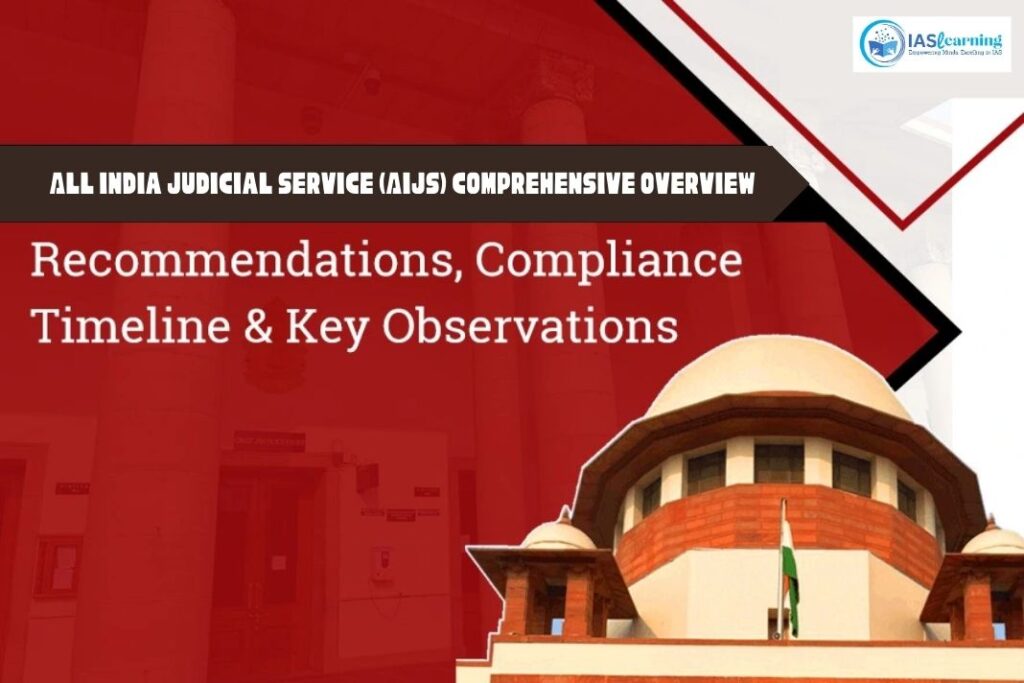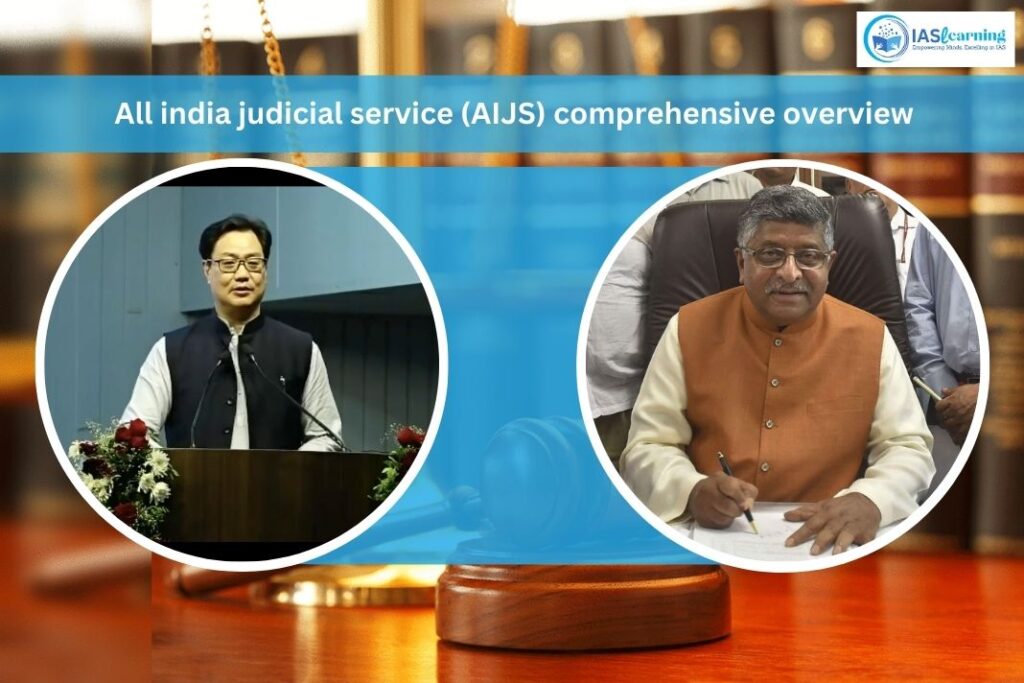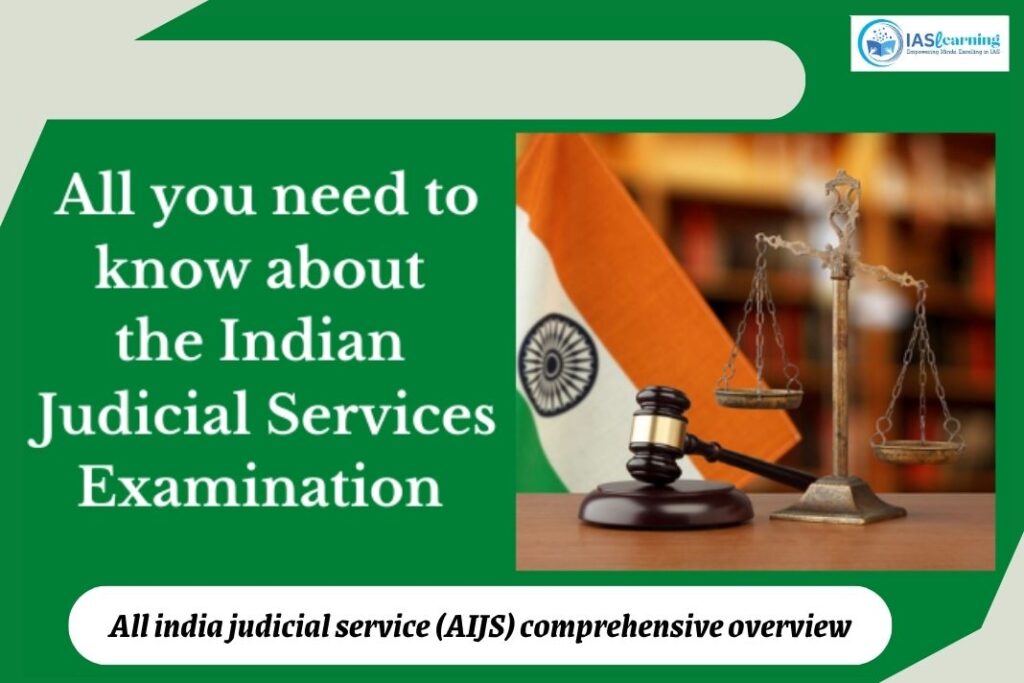All India Judicial Service (AIJS): Key Aspects
Definition:
- AIJS is a proposed centralized recruitment system for judges at the additional district and district levels across all Indian states.
Objective:
- Aims to centralize the recruitment of judges, similar to the Union Public Service Commission (UPSC) model, assigning successful candidates to states.

Origin:
- Originated from Law Commission reports in 1958 and 1978, addressing issues like varying pay, faster vacancy filling, and standardized nationwide training.
- Revisited in 2006 by the Parliamentary Standing Committee, supporting a pan-Indian judicial service.
- Proposed in the ‘Strategy for New India @ 75’ by NITI Aayog.

Constitutional Basis:
- Article 312 of the Constitution provides for the establishment of AIJS, similar to central civil services, upon a resolution by the Rajya Sabha supported by at least two-thirds of its members.
- Article 312 (2) states that AIJS cannot include any post inferior to that of a district judge, as defined in Article 236.
Current System of District Judges’ Recruitment:
- Involves Articles 233 and 234, granting states authority over the appointment of district judges.
- Managed through State Public Service Commissions and High Courts.
- Candidates are interviewed by panels of High Court judges after exams.
Feasibility of AIJS Implementation:
Advantages:
- Uniform Standards:
- Establishes uniform standards for the recruitment of judicial officers across states, ensuring a consistent and merit-based selection process.
- Addressing Judges to Population Ratio and Filling Vacancies:
- Aims to fill vacancies in lower courts, addressing the current issue of around 5,400 vacant positions and a pendency of 2.78 crore cases.
- Enhanced Accountability:
- Centralized service could lead to greater accountability in performance evaluation, training, and disciplinary actions.
- Attracting Talent Pool:
- Facilitates attracting the best legal talent from across the country through a rigorous examination-based system.
- Increase Diversity:
- Enhances the representation and diversity of judges, reflecting the social composition of the country.
- Prevents Parochialism and Political Interference:
- Prevents parochialism and political interference in appointments, ensuring an All India character.
- Bottoms-Up Approach:
- Adopts a bottom-up approach in recruitment to tackle corruption and nepotism in the lower judiciary, enhancing justice dispensation.

Challenges:
- Diversity of Laws:
- Concerns about homogenizing the judiciary and neglecting nuanced understanding of local laws and customs.
- Violates Basic Structure Doctrine:
- Requires significant constitutional amendments, potentially violating the basic structure doctrine and upsetting judicial federalism.
- Language Barrier:
- Apprehensions about handling cases in local languages, posing a challenge for judges from different regions.
- Administrative Challenges:
- Involves significant administrative challenges, including coordination, infrastructure, and adapting to regional variations.
- Political Opposition:
- May face political opposition as recruitment to subordinate judiciary is a prerogative of the State under Article 233.
- Reservations:
- Ensuring reservations for locally domiciled citizens poses legal and utility challenges.
The Way Forward:
- Ensuring High Standards:
- The AIJS examination aims to uphold high standards in the judiciary, aligning with recruitment processes of other civil services.
- Addressing Vacancy Causes:
- Investigate and understand underlying reasons for high vacancies, especially in underperforming states.
- Overcoming Administrative and Judicial Hurdles:
- AIJS faces resistance and must be designed to address shortcomings, garnering support from all stakeholders.
- Urgency in Recruitment:
- Prompt recruitment through AIJS is essential to address the judiciary’s vacancy crisis.
- Ensuring Meritocracy:
- Comprehensive training for Judicial Service officers is vital for a meritocratic judiciary.

Conclusion:
As of 2023, no consensus on AIJS exists due to diverging opinions. A balanced approach considering pros and cons, with judicious structure, can make AIJS viable. Key is the Centre-State consensus before transforming from idea to reality after almost fifty years of debate.
